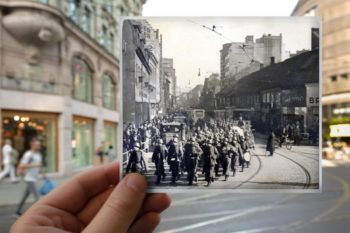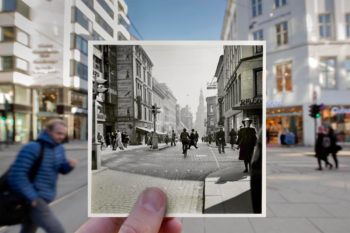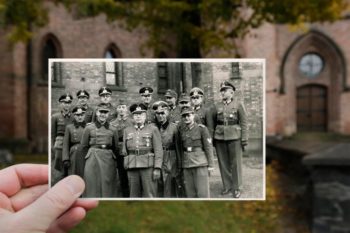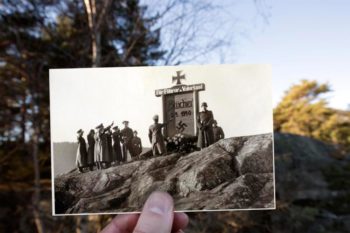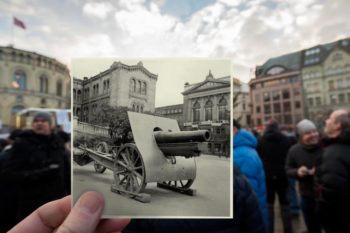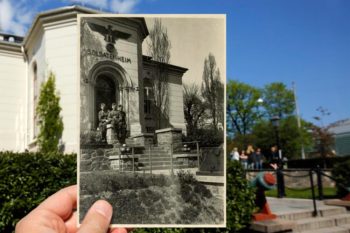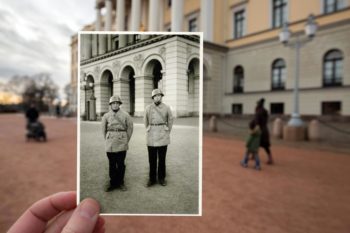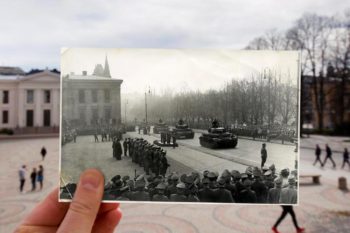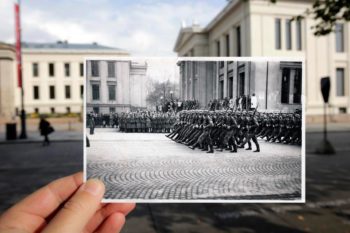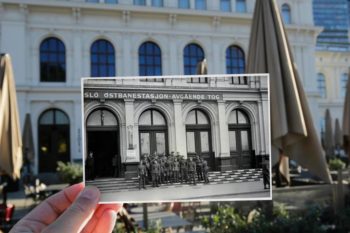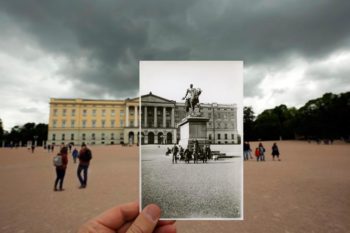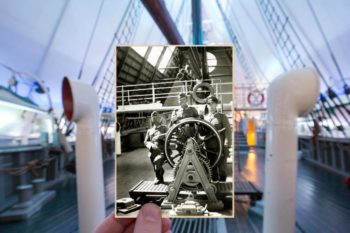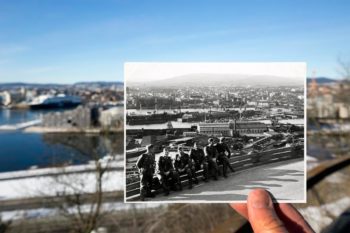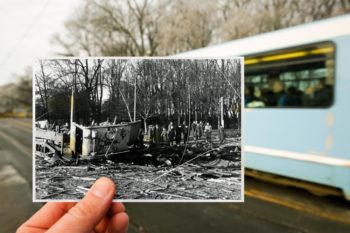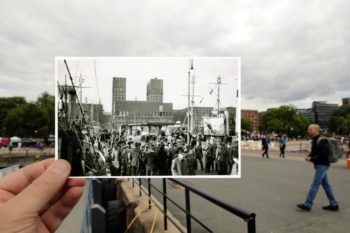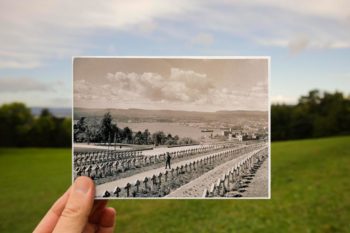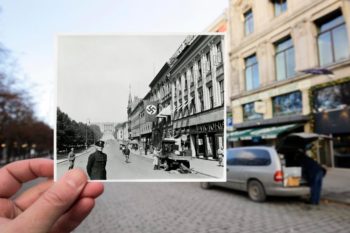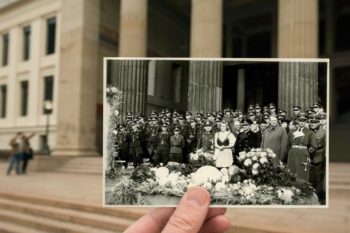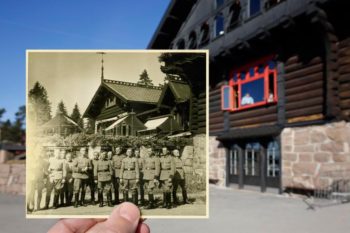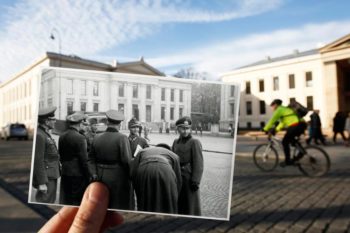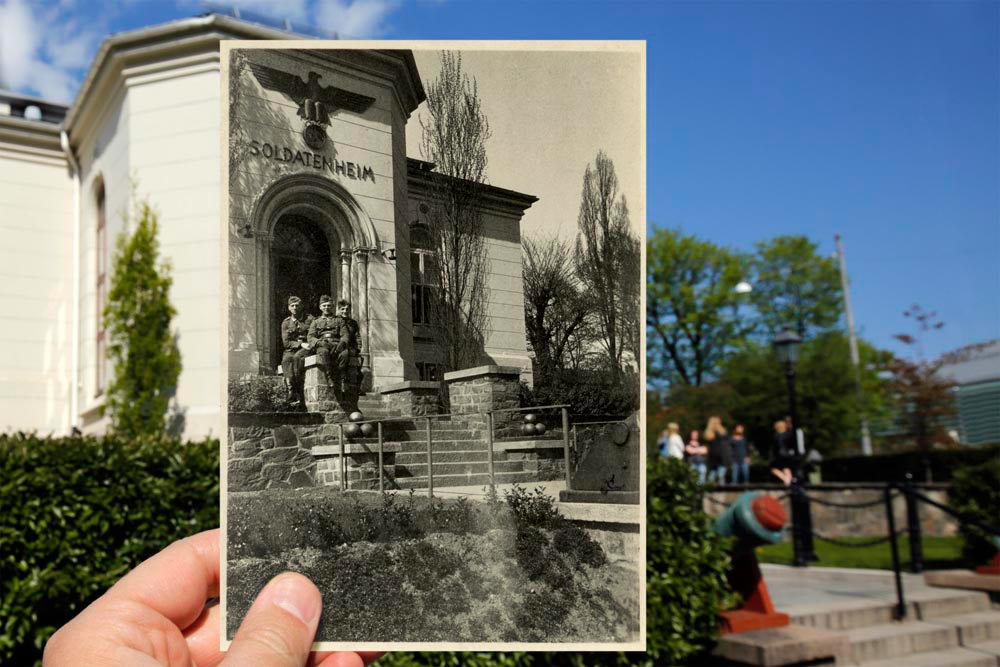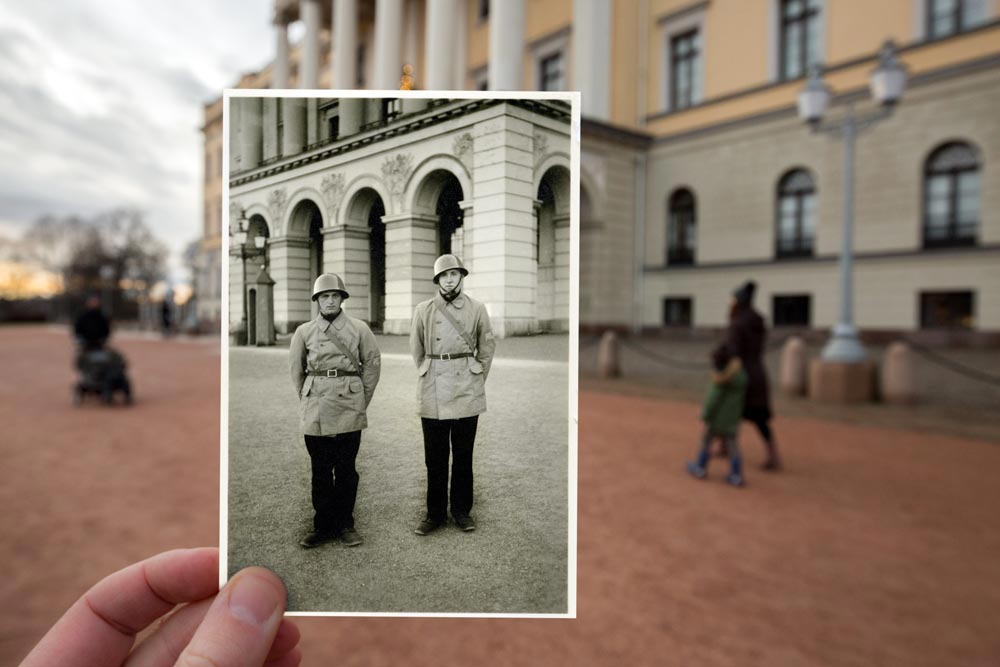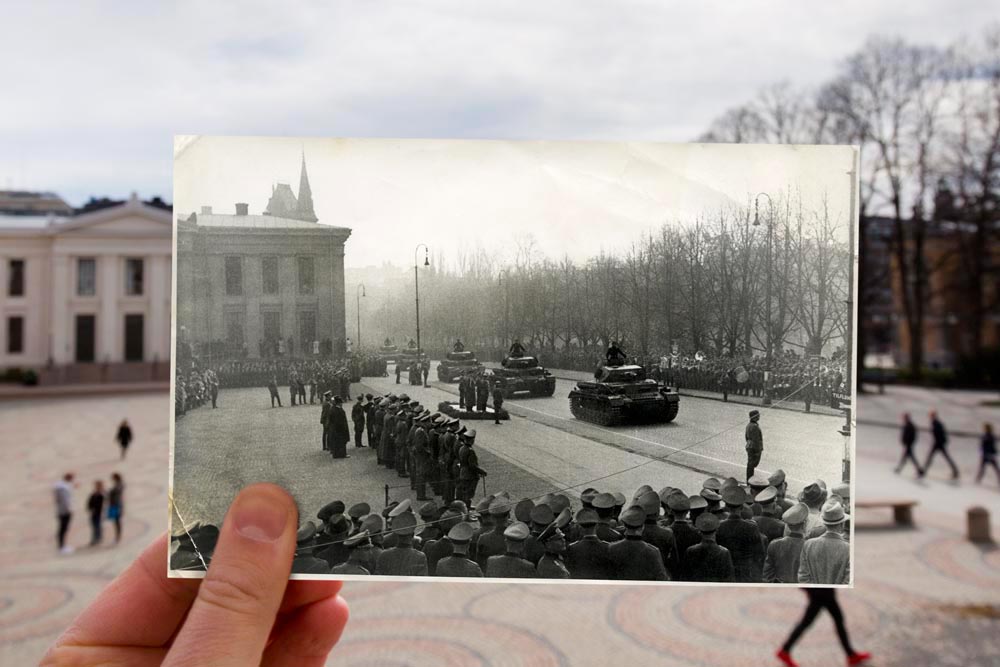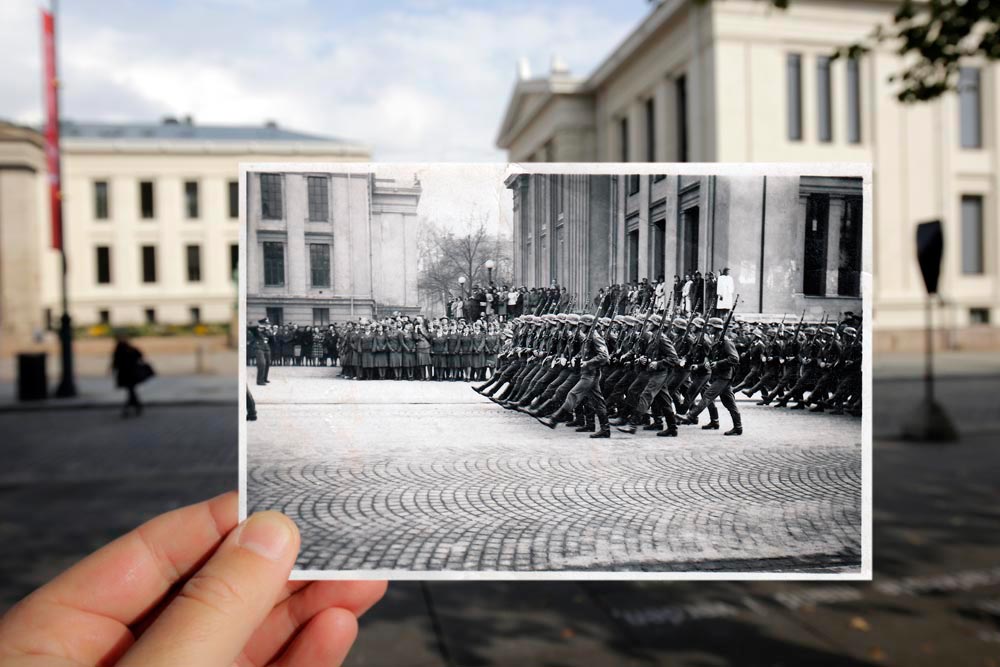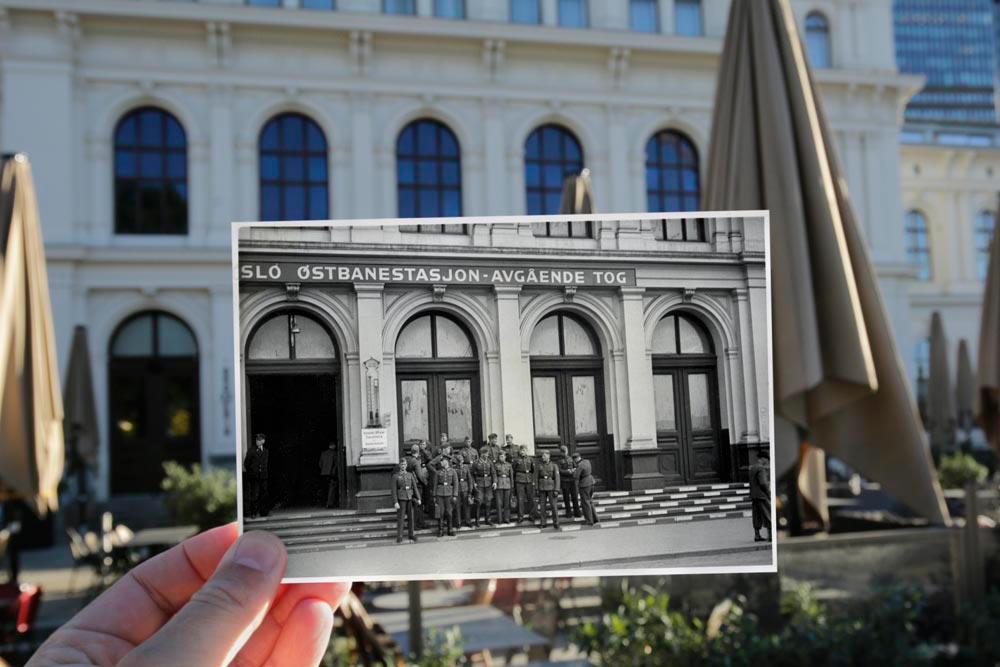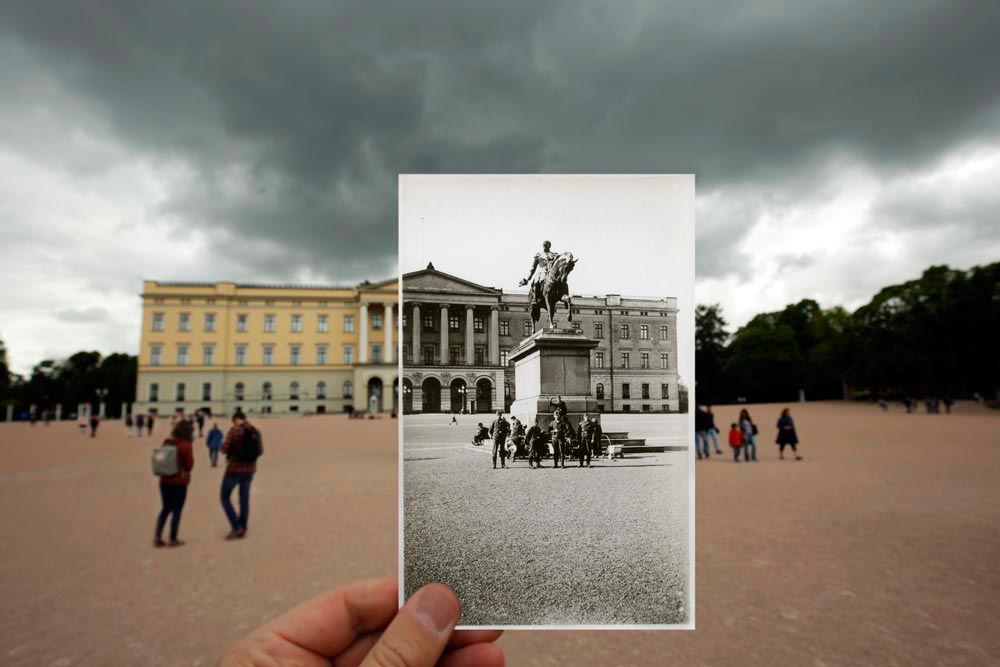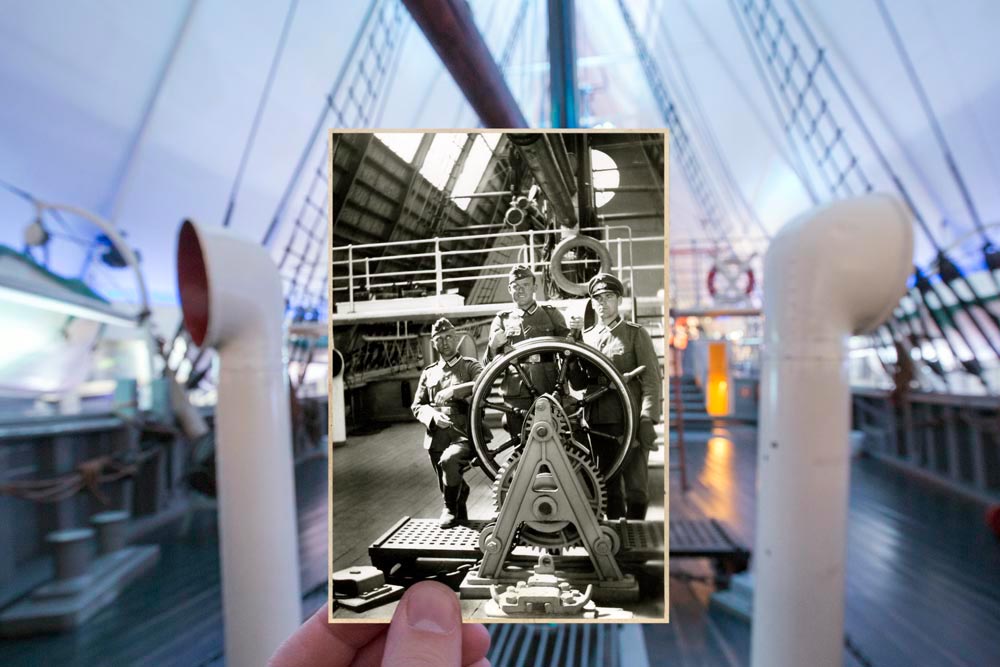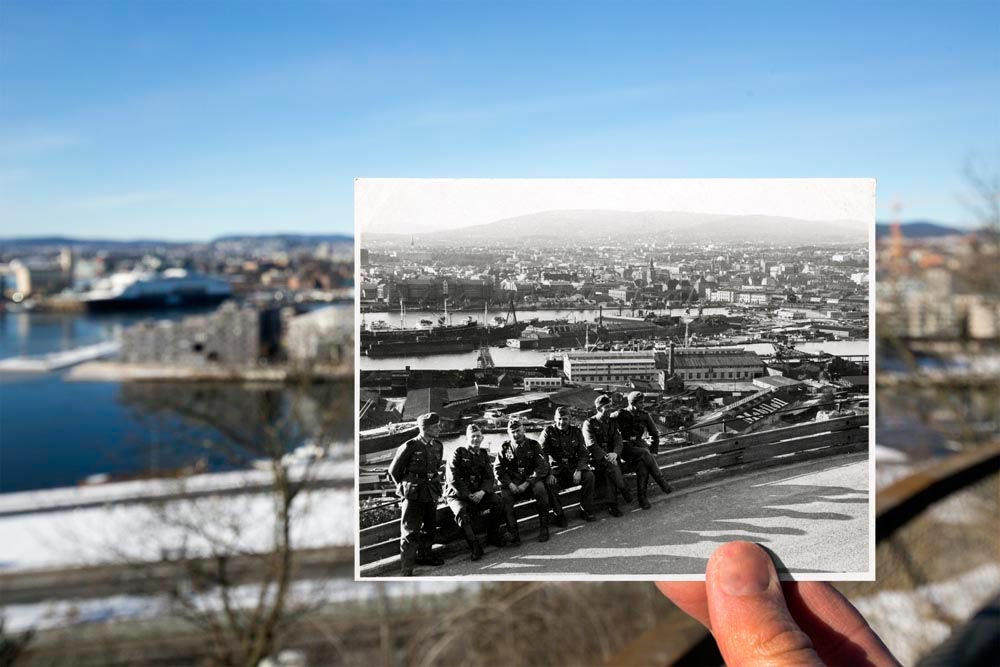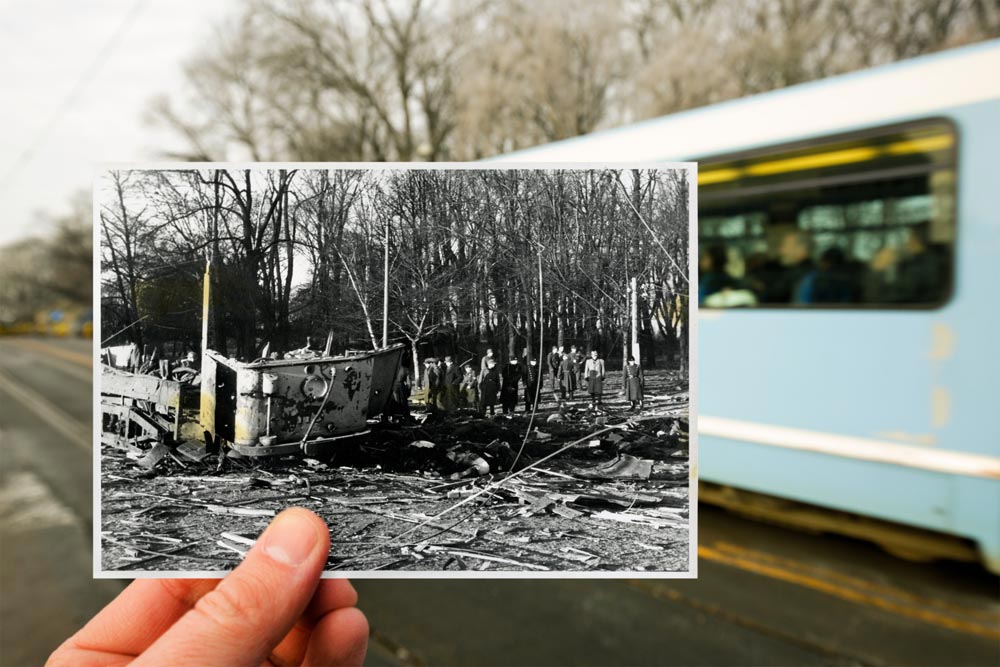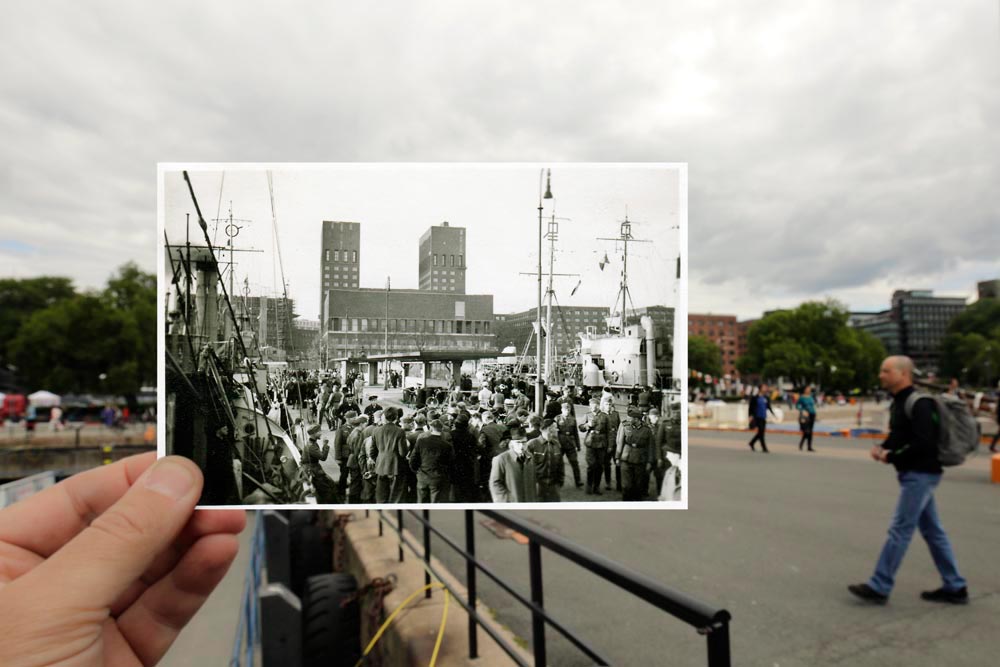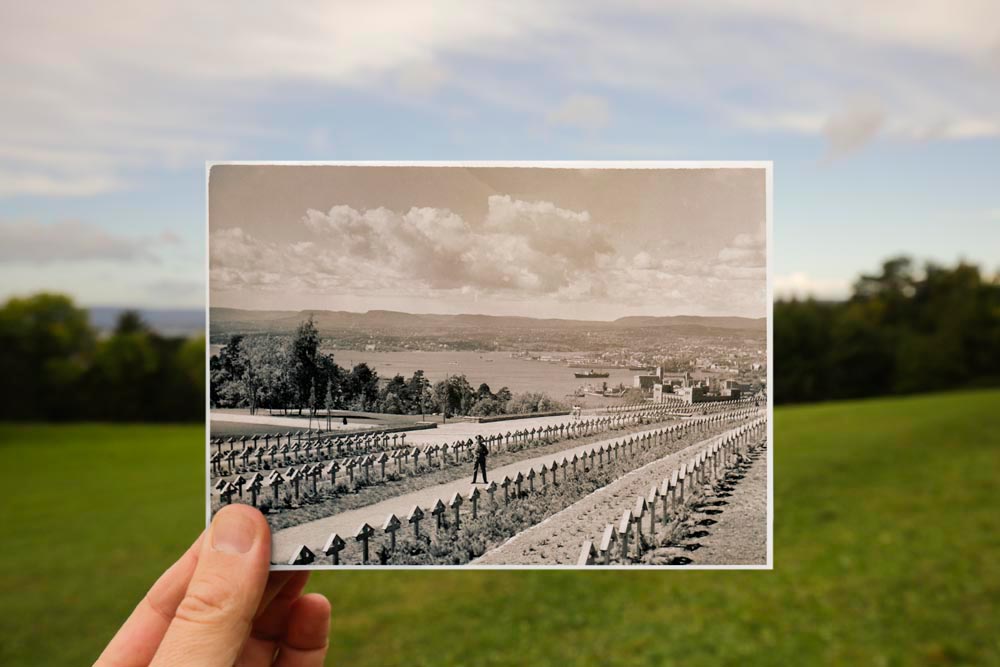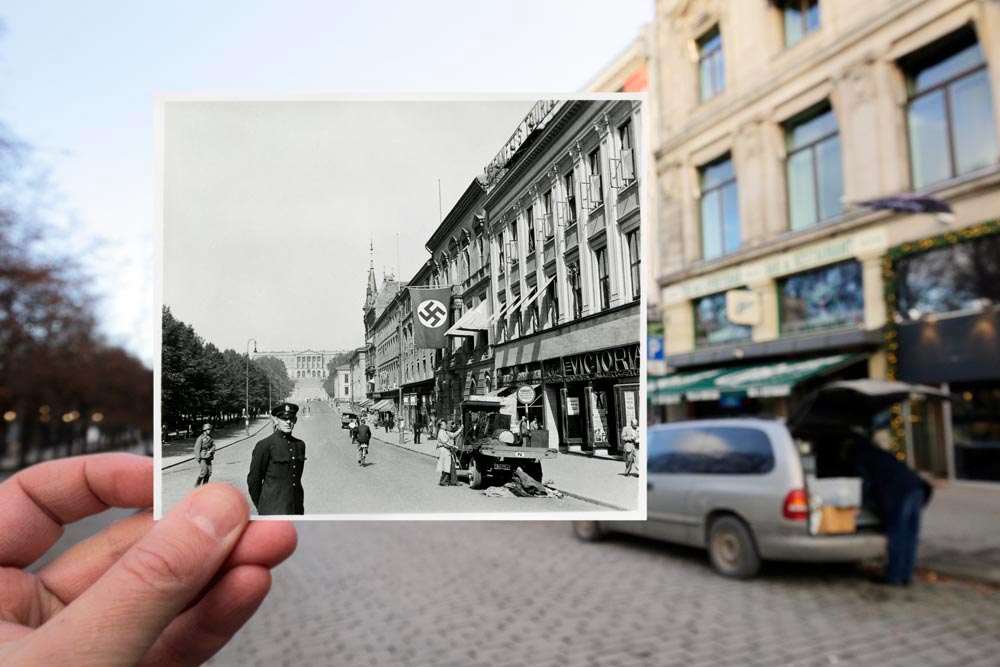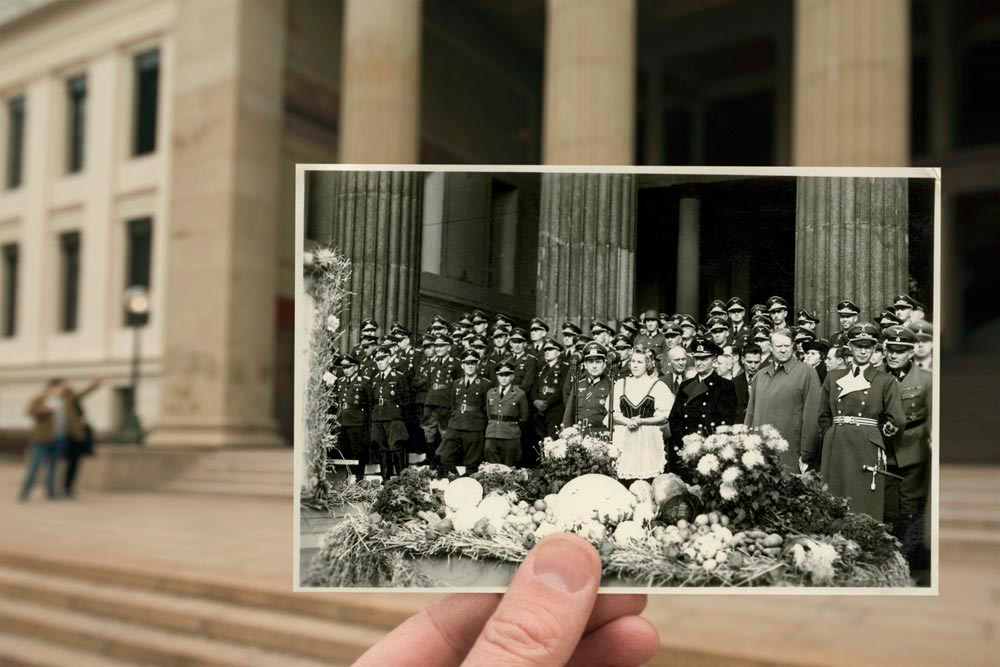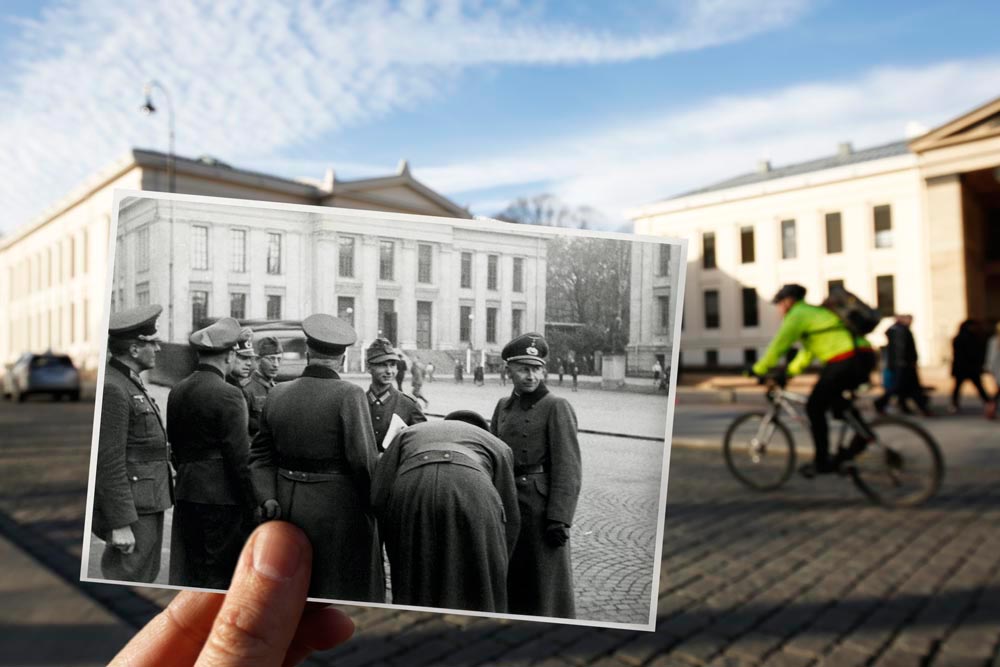
Storgata
January 1941
Marching soldiers and military bands became a common sight on the streets of Oslo.

Grensen St, May 1940.
Norway is a country of contrasts. One hardly experienced war brutality in Oslo, while Kirkenes was one of the most bombed cities on the European mainland.

Trinity Church, Unknown date. Chaplains are posing in front of the church.

Oscarsborg, 1943. The fast invasion of Oslo was extremely important for the Germans but it was here where the greatest trouble was awaited them. The cannons of the Oscarsborg Fortress were fired against the German cruiser Blücher that sunk with the landing on board. In the photo, German officers salute the memorial of the deceased cruiser at Oscarsborg.

Eidsvoll Square, 1941. German propaganda exhibition of Soviet trophy weapons was held in autumn 1941 on a square in front of the Parliament.

Christiania Military Society, April 1943.
The building was used as the German "Soldatenheim" where German soldiers spent their leisure time.

Royal Palace, Unknown date.
Many members of Norwegian police were Nazi sympathizers and about 40% of Norwegian policemen were members of Nasjonal Samling - Norwegian fascist party. It was mainly people from National Police who arrested 772 Norwegian Jews in 1942. Only 34 of these survived the war.

University square, April 1942.
Parade dedicated to Hitler's birthday on April 20th, 1942. Reichskommissar Terboven and Minister-President Quisling are standing on the podium, among others.

Karl Johan St, April 1942. Demonstration of German power dedicated to Hitler's Birthday celebration.

Oslo Central Station, Unknown date. On the night of February 2, 1942 a bomb placed by Oswald's group exploded in the building of the Oslo central station. This was the first sabotage operation in Oslo during the war.

Royal Palace, September 1940.
German soldiers are posing in front of the Royal Palace, which was used by Quisling as his headquarters since February 1942.

Polar Ship Museum, July 1941.
Germans felt safely in Oslo and enjoyed regular sightseeing.

Bjørvika, Unknown date.
View on Nylands shipyard, todays Bjørvika, where Norwegian resistance movement Pelle performed a sabotage resulting in two damaged German ships.

Henrik Ibsen St (Drammensveien), December 1944.
British aircraft attacked the Gestapo headquarters in Victoria terrasse on December 31, 1944. As a result of the attack, 105 people were killed – 78 Norwegians and 27 Germans. Most of the dead were in the tram that was hit by a bomb on Drammensveien .

City Hall, Unknown date.
The City Hall, which was under construction, was requisitioned and used by the German military. There were antiaircraft guns on the western tower protecting Oslo from English raids.

Ekeberg, 1942.
The Nazi honorary graveyard was the largest cemetery in Norway. It was located on the Ekeberg hill in Oslo. In 1953 the graveyard was relocated to the outskirts of the city.

Karl Johan St, Unknown date.
Only a large flag with swastika reminds of the war. The building with the flag was confiscated by the occupation authorities and used as an exclusive restaurant “Deutsches Haus” serving only officers.

Oslo University, October 1942.
The political and military elite of Norway in front of the Aula on Thanksgiving Day on October 4, 1942. Reichskommissar Terboven and Minister-President Quisling are attending the ceremony.

Frognerseteren, 1940.
During the war, the Germans used Frognerseteren for various events, but the restaurant was not closed down and continued to work for all the years of occupation.

Karl Johan St, Unknown Date. Chaplains are during a tour in Oslo
